67 items found
Page 1 of 1
-

Eagle Wharf, Whistler
£1,200Eagle Wharf, Whistler
A framed black-line etching by the American artist and engraver James MacNeil Whistler showing shipping off Eagle Wharf off Wapping in the Pool of London. Taken from 'A Series of Sixteen Etchings of Scenes on the Thames and Other Subjects', otherwise referred to as The Thames Set, the pictures were created over a period of 12 years starting in 1859 and finally published as a complete set by Ellis & Green in London in 1871.£1,200 -
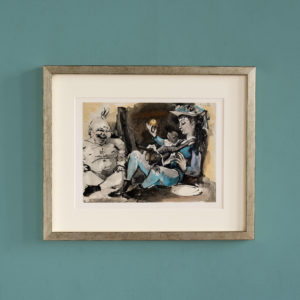
Picasso and the Human Comedy, Verve, Vol. VIII, No 29/30, 1954
£795 eachPicasso and the Human Comedy, Verve, Vol. VIII, No 29/30, 1954
Original lithograph print from Verve Vol. VIII, No 29/30 printed by the Master Printers Mourlot Frères in 1954. Framed in champagne gold with a cream mount.£795 each -
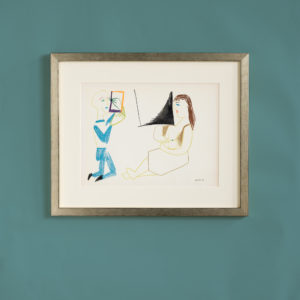
Picasso and the Human Comedy, Verve, Vol. VIII, No 29/30, 1954
£795 eachPicasso and the Human Comedy, Verve, Vol. VIII, No 29/30, 1954
Original lithograph print from Verve Vol. VIII, No 29/30 printed by the Master Printers Mourlot Frères in 1954. Framed in champagne gold with a cream mount.£795 each -
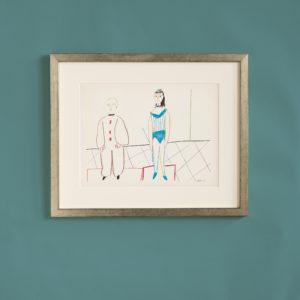
Picasso and the Human Comedy, Verve, Vol. VIII, No 29/30, 1954
£795 eachPicasso and the Human Comedy, Verve, Vol. VIII, No 29/30, 1954
Original lithograph print from Verve Vol. VIII, No 29/30 printed by the Master Printers Mourlot Frères in 1954. Framed in champagne gold with a cream mount.£795 each -
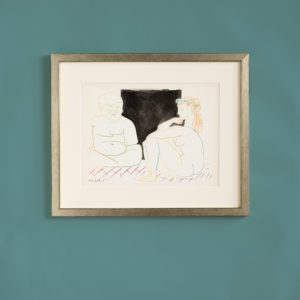
Picasso and the Human Comedy, Verve, Vol. VIII, No 29/30, 1954
£795 eachPicasso and the Human Comedy, Verve, Vol. VIII, No 29/30, 1954
Original lithograph print from Verve Vol. VIII, No 29/30 printed by the Master Printers Mourlot Frères in 1954. Framed in champagne gold with a cream mount.£795 each -
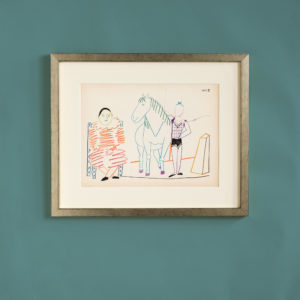
Picasso and the Human Comedy, Verve, Vol. VIII, No 29/30, 1954
£795 eachPicasso and the Human Comedy, Verve, Vol. VIII, No 29/30, 1954
Original lithograph print from Verve Vol. VIII, No 29/30 printed by the Master Printers Mourlot Frères in 1954. Framed in champagne gold with a cream mount.£795 each -
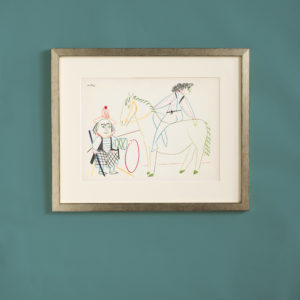
Picasso and the Human Comedy, Verve, Vol. VIII, No 29/30, 1954
£795 eachPicasso and the Human Comedy, Verve, Vol. VIII, No 29/30, 1954
Original lithograph print from Verve Vol. VIII, No 29/30 printed by the Master Printers Mourlot Frères in 1954. Framed in champagne gold with a cream mount.£795 each -
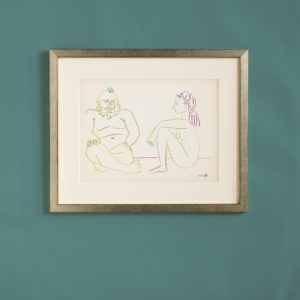
Picasso and the Human Comedy, Verve, Vol. VIII, No 29/30, 1954
£795 eachPicasso and the Human Comedy, Verve, Vol. VIII, No 29/30, 1954
Original lithograph print from Verve Vol. VIII, No 29/30 printed by the Master Printers Mourlot Frères in 1954. Framed in champagne gold with a cream mount.£795 each -
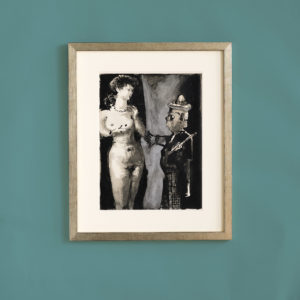
Picasso and the Human Comedy, Verve, Vol. VIII, No 29/30, 1954
£795 eachPicasso and the Human Comedy, Verve, Vol. VIII, No 29/30, 1954
Original lithograph print from Verve Vol. VIII, No 29/30 printed by the Master Printers Mourlot Frères in 1954. Framed in champagne gold with a cream mount.£795 each -
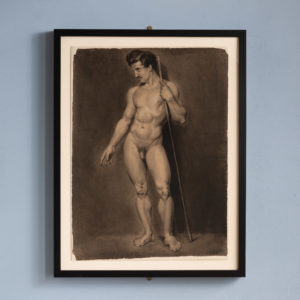
Early nineteenth century nude study,
£750Early nineteenth century nude study,
An early nineteenth century framed charcoal life-study of a male figure. The figure is shown heroically nude, from the front, in a full length, slightly serpentina pose with the right arm radiating from the torso. The composition is depicted contraposto and leaning on a spear or staff. The pose depicted is shows a slightly adapted and altered rendering of the famous Doryphorus, or Spear-Barer of Polykleitos. Polykleitos was known as the best sculptor of men in the ancient world, with the primary subjects of his works being male athletes with idealised body proportions. He was interested most chiefly in the mathematical proportions of the human form, which led him to write an essay the famous Kanon, on the proportions of humans. The Doryphoros is an illustration of his writings in Kanon on the symmetry between the body parts£750 -
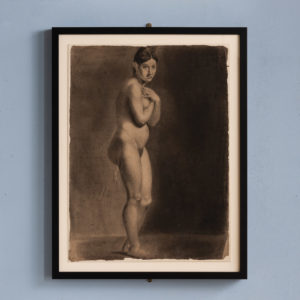
Early nineteenth century nude study,
£750Early nineteenth century nude study,
An early nineteenth century framed charcoal life-study of a female figure. The figure, shown side-on, models the Pudica pose, an affected posture of chaste virtue, inherited from classical art.£750 -
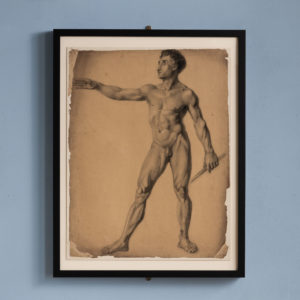
Early nineteenth century nude study,
£750Early nineteenth century nude study,
An early nineteenth century framed charcoal life-study of a male figure. The figure is shown heroically nude, from the front, in a full length, adlocutio pose, contraposto and grasping a shaft or baton. The pose is a famous one in Classical Art, said to embody power, control and leadership, and its most famous example is the Augusto di Prima Porta in the Vatican Museums in Rome.£750 -
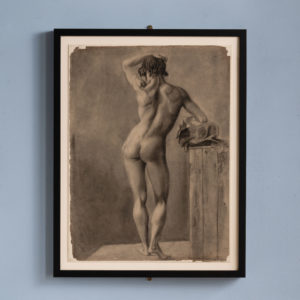
Early nineteenth century nude study,
£750Early nineteenth century nude study,
An early nineteenth century framed charcoal life-study of a male figure. The figure is shown from behind in full length, contraposto, with developed musculature and a sinuous, dramatic, figura serpentina recollecting the Dancing Faun of the Uffizi, and the famous Farnese Hercules.£750 -
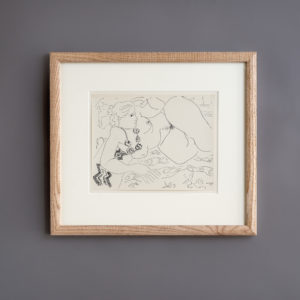
Cahiers D’Art, Dessins de Matisse
£300 eachCahiers D’Art, Dessins de Matisse
Cahiers d'Art is a French artistic and literary journal originally founded in 1926 by Christian Zervos, a Greek philosopher, editor. Born in 1889 in Argostoli on the Greek island of Cephalonia he was brought up in Alexandria, Egypt, finally moving to Paris in 1922. In 1924 Zervos joined the publishing firm Editions Morancé writing art articles for the magazine L'Art d'aujourd '. As an editor, he met many of the artists about whom the magazine wrote: Henri Matisse, Georges Braque, Ferdinand Léger, and Pablo Picasso. He left Morancé in 1926 to found his own journal Cahiers d'art becoming simultaneously publisher, director, model maker, chief editor and main editor. Each issue balanced primitive arts with the modern and contemporary arts and articles by art critics with more literary and poetic texts. According to Zervos, the interest in prehistoric, ancient and extra-European arts was necessary to get a glimpse of contemporary art. It was Zervos who took on the enormous task of documenting all the works of Pablo Picasso into a33-volume catalogue raisonnée, published between 1932 and 1978. One of his deepest wishes was to build up with Cahiers d’Art the visual archives of the artists he considered important. Zervos married Yvonne Marion who ran an art gallery, Galerie du Dragon, next to the location of her husband's shop, the rue Dragon on the left bank of Paris. Madame Zervos became an integral part of her husband's accomplishment and assembling their art collection. Initially published from 1926 to 1960 Cahiers d'Art still exists today after Swedish collector Staffan Ahrenberg purchased the publication and relaunched it in October 2012.£300 each -
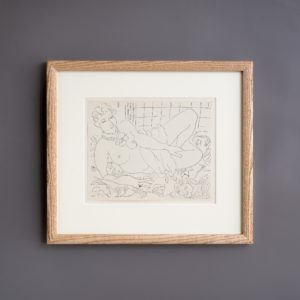
Cahiers D’Art, Dessins de Matisse
£300 eachCahiers D’Art, Dessins de Matisse
Cahiers d'Art is a French artistic and literary journal originally founded in 1926 by Christian Zervos, a Greek philosopher, editor. Born in 1889 in Argostoli on the Greek island of Cephalonia he was brought up in Alexandria, Egypt, finally moving to Paris in 1922. In 1924 Zervos joined the publishing firm Editions Morancé writing art articles for the magazine L'Art d'aujourd '. As an editor, he met many of the artists about whom the magazine wrote: Henri Matisse, Georges Braque, Ferdinand Léger, and Pablo Picasso. He left Morancé in 1926 to found his own journal Cahiers d'art becoming simultaneously publisher, director, model maker, chief editor and main editor. Each issue balanced primitive arts with the modern and contemporary arts and articles by art critics with more literary and poetic texts. According to Zervos, the interest in prehistoric, ancient and extra-European arts was necessary to get a glimpse of contemporary art. It was Zervos who took on the enormous task of documenting all the works of Pablo Picasso into a33-volume catalogue raisonnée, published between 1932 and 1978. One of his deepest wishes was to build up with Cahiers d’Art the visual archives of the artists he considered important. Zervos married Yvonne Marion who ran an art gallery, Galerie du Dragon, next to the location of her husband's shop, the rue Dragon on the left bank of Paris. Madame Zervos became an integral part of her husband's accomplishment and assembling their art collection. Initially published from 1926 to 1960 Cahiers d'Art still exists today after Swedish collector Staffan Ahrenberg purchased the publication and relaunched it in October 2012.£300 each -
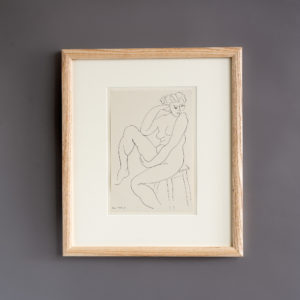
Cahiers D’Art, Dessins de Matisse
£300 eachCahiers D’Art, Dessins de Matisse
Cahiers d'Art is a French artistic and literary journal originally founded in 1926 by Christian Zervos, a Greek philosopher, editor. Born in 1889 in Argostoli on the Greek island of Cephalonia he was brought up in Alexandria, Egypt, finally moving to Paris in 1922. In 1924 Zervos joined the publishing firm Editions Morancé writing art articles for the magazine L'Art d'aujourd '. As an editor, he met many of the artists about whom the magazine wrote: Henri Matisse, Georges Braque, Ferdinand Léger, and Pablo Picasso. He left Morancé in 1926 to found his own journal Cahiers d'art becoming simultaneously publisher, director, model maker, chief editor and main editor. Each issue balanced primitive arts with the modern and contemporary arts and articles by art critics with more literary and poetic texts. According to Zervos, the interest in prehistoric, ancient and extra-European arts was necessary to get a glimpse of contemporary art. It was Zervos who took on the enormous task of documenting all the works of Pablo Picasso into a33-volume catalogue raisonnée, published between 1932 and 1978. One of his deepest wishes was to build up with Cahiers d’Art the visual archives of the artists he considered important. Zervos married Yvonne Marion who ran an art gallery, Galerie du Dragon, next to the location of her husband's shop, the rue Dragon on the left bank of Paris. Madame Zervos became an integral part of her husband's accomplishment and assembling their art collection. Initially published from 1926 to 1960 Cahiers d'Art still exists today after Swedish collector Staffan Ahrenberg purchased the publication and relaunched it in October 2012.£300 each -
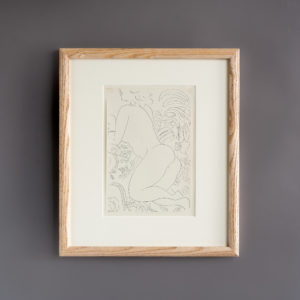
Cahiers D’Art, Dessins de Matisse
£300 eachCahiers D’Art, Dessins de Matisse
Cahiers d'Art is a French artistic and literary journal originally founded in 1926 by Christian Zervos, a Greek philosopher, editor. Born in 1889 in Argostoli on the Greek island of Cephalonia he was brought up in Alexandria, Egypt, finally moving to Paris in 1922. In 1924 Zervos joined the publishing firm Editions Morancé writing art articles for the magazine L'Art d'aujourd '. As an editor, he met many of the artists about whom the magazine wrote: Henri Matisse, Georges Braque, Ferdinand Léger, and Pablo Picasso. He left Morancé in 1926 to found his own journal Cahiers d'art becoming simultaneously publisher, director, model maker, chief editor and main editor. Each issue balanced primitive arts with the modern and contemporary arts and articles by art critics with more literary and poetic texts. According to Zervos, the interest in prehistoric, ancient and extra-European arts was necessary to get a glimpse of contemporary art. It was Zervos who took on the enormous task of documenting all the works of Pablo Picasso into a33-volume catalogue raisonnée, published between 1932 and 1978. One of his deepest wishes was to build up with Cahiers d’Art the visual archives of the artists he considered important. Zervos married Yvonne Marion who ran an art gallery, Galerie du Dragon, next to the location of her husband's shop, the rue Dragon on the left bank of Paris. Madame Zervos became an integral part of her husband's accomplishment and assembling their art collection. Initially published from 1926 to 1960 Cahiers d'Art still exists today after Swedish collector Staffan Ahrenberg purchased the publication and relaunched it in October 2012.£300 each -
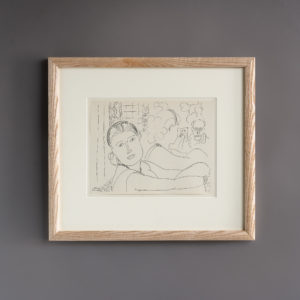
Cahiers D’Art, Dessins de Matisse
£300 eachCahiers D’Art, Dessins de Matisse
Cahiers d'Art is a French artistic and literary journal originally founded in 1926 by Christian Zervos, a Greek philosopher, editor. Born in 1889 in Argostoli on the Greek island of Cephalonia he was brought up in Alexandria, Egypt, finally moving to Paris in 1922. In 1924 Zervos joined the publishing firm Editions Morancé writing art articles for the magazine L'Art d'aujourd '. As an editor, he met many of the artists about whom the magazine wrote: Henri Matisse, Georges Braque, Ferdinand Léger, and Pablo Picasso. He left Morancé in 1926 to found his own journal Cahiers d'art becoming simultaneously publisher, director, model maker, chief editor and main editor. Each issue balanced primitive arts with the modern and contemporary arts and articles by art critics with more literary and poetic texts. According to Zervos, the interest in prehistoric, ancient and extra-European arts was necessary to get a glimpse of contemporary art. It was Zervos who took on the enormous task of documenting all the works of Pablo Picasso into a33-volume catalogue raisonnée, published between 1932 and 1978. One of his deepest wishes was to build up with Cahiers d’Art the visual archives of the artists he considered important. Zervos married Yvonne Marion who ran an art gallery, Galerie du Dragon, next to the location of her husband's shop, the rue Dragon on the left bank of Paris. Madame Zervos became an integral part of her husband's accomplishment and assembling their art collection. Initially published from 1926 to 1960 Cahiers d'Art still exists today after Swedish collector Staffan Ahrenberg purchased the publication and relaunched it in October 2012.£300 each -
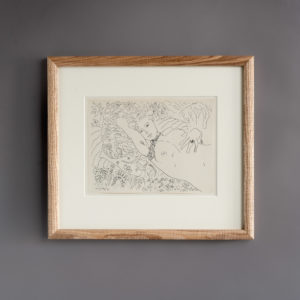
Cahiers D’Art, Dessins de Matisse
£300 eachCahiers D’Art, Dessins de Matisse
Cahiers d'Art is a French artistic and literary journal originally founded in 1926 by Christian Zervos, a Greek philosopher, editor. Born in 1889 in Argostoli on the Greek island of Cephalonia he was brought up in Alexandria, Egypt, finally moving to Paris in 1922. In 1924 Zervos joined the publishing firm Editions Morancé writing art articles for the magazine L'Art d'aujourd '. As an editor, he met many of the artists about whom the magazine wrote: Henri Matisse, Georges Braque, Ferdinand Léger, and Pablo Picasso. He left Morancé in 1926 to found his own journal Cahiers d'art becoming simultaneously publisher, director, model maker, chief editor and main editor. Each issue balanced primitive arts with the modern and contemporary arts and articles by art critics with more literary and poetic texts. According to Zervos, the interest in prehistoric, ancient and extra-European arts was necessary to get a glimpse of contemporary art. It was Zervos who took on the enormous task of documenting all the works of Pablo Picasso into a33-volume catalogue raisonnée, published between 1932 and 1978. One of his deepest wishes was to build up with Cahiers d’Art the visual archives of the artists he considered important. Zervos married Yvonne Marion who ran an art gallery, Galerie du Dragon, next to the location of her husband's shop, the rue Dragon on the left bank of Paris. Madame Zervos became an integral part of her husband's accomplishment and assembling their art collection. Initially published from 1926 to 1960 Cahiers d'Art still exists today after Swedish collector Staffan Ahrenberg purchased the publication and relaunched it in October 2012.£300 each -
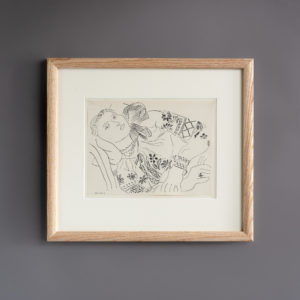
Cahiers D’Art, Dessins de Matisse
£300 eachCahiers D’Art, Dessins de Matisse
Cahiers d'Art is a French artistic and literary journal originally founded in 1926 by Christian Zervos, a Greek philosopher, editor. Born in 1889 in Argostoli on the Greek island of Cephalonia he was brought up in Alexandria, Egypt, finally moving to Paris in 1922. In 1924 Zervos joined the publishing firm Editions Morancé writing art articles for the magazine L'Art d'aujourd '. As an editor, he met many of the artists about whom the magazine wrote: Henri Matisse, Georges Braque, Ferdinand Léger, and Pablo Picasso. He left Morancé in 1926 to found his own journal Cahiers d'art becoming simultaneously publisher, director, model maker, chief editor and main editor. Each issue balanced primitive arts with the modern and contemporary arts and articles by art critics with more literary and poetic texts. According to Zervos, the interest in prehistoric, ancient and extra-European arts was necessary to get a glimpse of contemporary art. It was Zervos who took on the enormous task of documenting all the works of Pablo Picasso into a33-volume catalogue raisonnée, published between 1932 and 1978. One of his deepest wishes was to build up with Cahiers d’Art the visual archives of the artists he considered important. Zervos married Yvonne Marion who ran an art gallery, Galerie du Dragon, next to the location of her husband's shop, the rue Dragon on the left bank of Paris. Madame Zervos became an integral part of her husband's accomplishment and assembling their art collection. Initially published from 1926 to 1960 Cahiers d'Art still exists today after Swedish collector Staffan Ahrenberg purchased the publication and relaunched it in October 2012.£300 each -
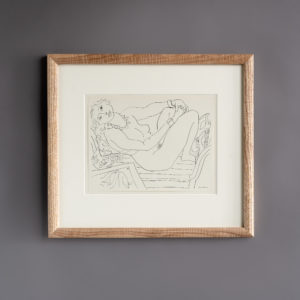
Cahiers D’Art, Dessins de Matisse
£300 eachCahiers D’Art, Dessins de Matisse
Cahiers d'Art is a French artistic and literary journal originally founded in 1926 by Christian Zervos, a Greek philosopher, editor. Born in 1889 in Argostoli on the Greek island of Cephalonia he was brought up in Alexandria, Egypt, finally moving to Paris in 1922. In 1924 Zervos joined the publishing firm Editions Morancé writing art articles for the magazine L'Art d'aujourd '. As an editor, he met many of the artists about whom the magazine wrote: Henri Matisse, Georges Braque, Ferdinand Léger, and Pablo Picasso. He left Morancé in 1926 to found his own journal Cahiers d'art becoming simultaneously publisher, director, model maker, chief editor and main editor. Each issue balanced primitive arts with the modern and contemporary arts and articles by art critics with more literary and poetic texts. According to Zervos, the interest in prehistoric, ancient and extra-European arts was necessary to get a glimpse of contemporary art. It was Zervos who took on the enormous task of documenting all the works of Pablo Picasso into a33-volume catalogue raisonnée, published between 1932 and 1978. One of his deepest wishes was to build up with Cahiers d’Art the visual archives of the artists he considered important. Zervos married Yvonne Marion who ran an art gallery, Galerie du Dragon, next to the location of her husband's shop, the rue Dragon on the left bank of Paris. Madame Zervos became an integral part of her husband's accomplishment and assembling their art collection. Initially published from 1926 to 1960 Cahiers d'Art still exists today after Swedish collector Staffan Ahrenberg purchased the publication and relaunched it in October 2012.£300 each -
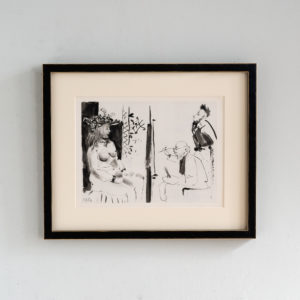
Picasso, Verve 1954
£295Picasso, Verve 1954
Original héliogravure print from Verve Vol. VIII, No 29/30 printed by the Master Printers Draeger Frères in 1954. Framed in black with a cream mount.£295 -
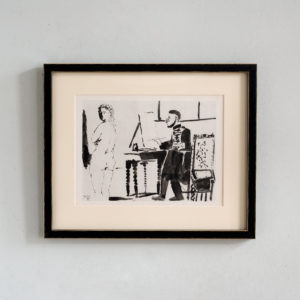
Picasso, Verve 1954
£295Picasso, Verve 1954
Original héliogravure print from Verve Vol. VIII, No 29/30 printed by the Master Printers Draeger Frères in 1954. Framed in black with a cream mount.£295 -
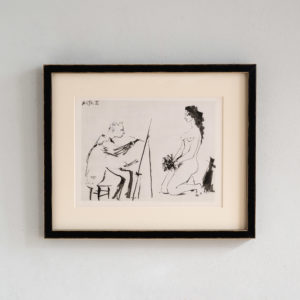
Picasso, Verve 1954
£295Picasso, Verve 1954
Original héliogravure print from Verve Vol. VIII, No 29/30 printed by the Master Printers Draeger Frères in 1954. Framed in black with a cream mount.£295 -
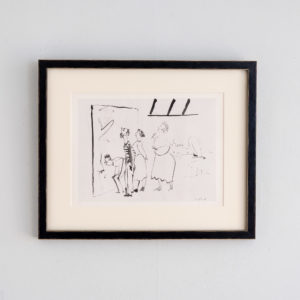
Picasso, Verve 1954
£295Picasso, Verve 1954
Original héliogravure print from Verve Vol. VIII, No 29/30 printed by the Master Printers Draeger Frères in 1954. Framed in black with a cream mount.£295 -
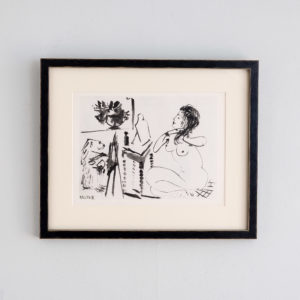
Picasso, Verve 1954
£295Picasso, Verve 1954
Original héliogravure print from Verve Vol. VIII, No 29/30 printed by the Master Printers Draeger Frères in 1954. Framed in black with a cream mount.£295 -
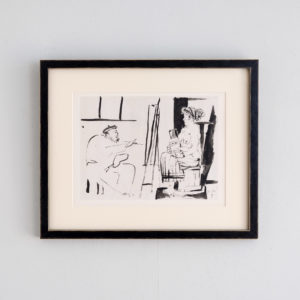
Picasso, Verve 1954
£295Picasso, Verve 1954
Original héliogravure print from Verve Vol. VIII, No 29/30 printed by the Master Printers Draeger Frères in 1954. Framed in black with a cream mount.£295 -
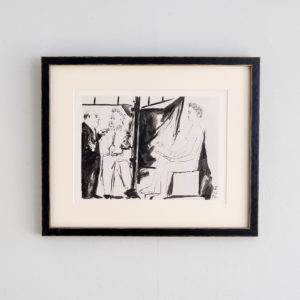
Picasso, Verve 1954
£295Picasso, Verve 1954
Original héliogravure print from Verve Vol. VIII, No 29/30 printed by the Master Printers Draeger Frères in 1954. Framed in black with a cream mount.£295 -
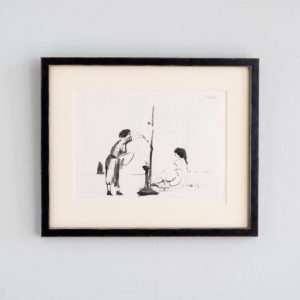
Picasso, Verve 1954
£295Picasso, Verve 1954
Original heliograuvre print from Verve Vol. VIII, No 29/30 printed by the Master Printers Draeger Frères in 1954. Framed in black with a cream mount.£295 -
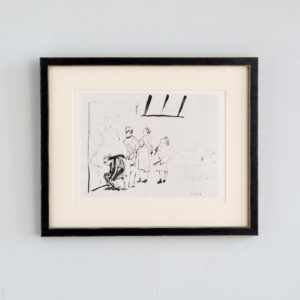
Picasso, Verve 1954
£295Picasso, Verve 1954
Original héliogravure print from Verve Vol. VIII, No 29/30 printed by the Master Printers Draeger Frères in 1954. Framed in black with a cream mount.£295 -
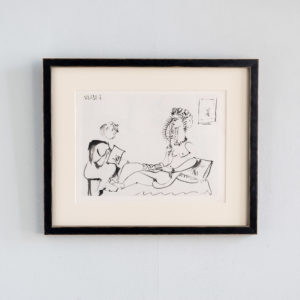
Picasso, Verve 1954
£295Picasso, Verve 1954
Original héliogravure print from Verve Vol. VIII, No 29/30 printed by the Master Printers Draeger Frères in 1954. Framed in black with a cream mount.£295 -
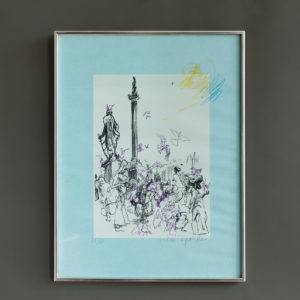
Feliks Topolski Trafalgar Square
£250Feliks Topolski Trafalgar Square
A framed Lithograph by the Anglo-Polish Expressionist artist Feliks Topolski RA showing view of Nelson's Column and Trafalgar Square.£250 -

Feliks Topolski City
£250Feliks Topolski City
A framed Lithograph by the Anglo-Polish Expressionist artist Feliks Topolski RA showing view of the City of London seen from the South Bank of the Thames.£250 -
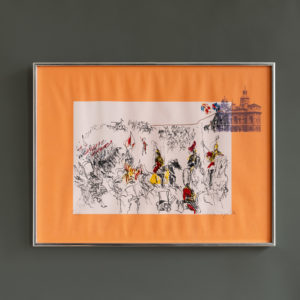
Feliks Topolski Trooping the Colour
£250Feliks Topolski Trooping the Colour
A framed Lithograph by the Anglo-Polish Expressionist artist Feliks Topolski RA showing the Trooping of the Colour at Horseguards Parade in London.£250 -

Feliks Topolski Speakers’ Corner
£250Feliks Topolski Speakers’ Corner
A framed Lithograph by the Anglo-Polish Expressionist artist Feliks Topolski RA showing a scene at Speakers Corner in London's Hyde Park.£250 -
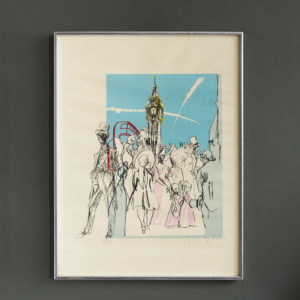
Feliks Topolski Westminster
£250Feliks Topolski Westminster
A framed Lithograph by the Anglo-Polish Expressionist artist Feliks Topolski RA showing a scene at Wesminster.£250 -
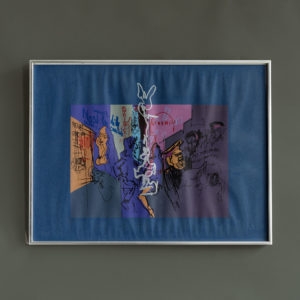
Feliks Topolski Piccadilly Circus
£250Feliks Topolski Piccadilly Circus
A framed Lithograph by the Anglo-Polish Expressionist artist Feliks Topolski RA showing a night scene at Picadilly Circus.£250 -
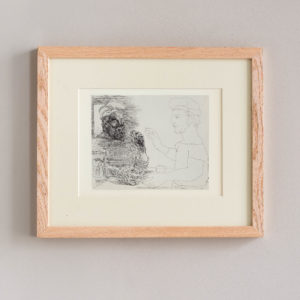
Picasso, Vollard Suite, 1956. c. May 1933.
£175 eachPicasso, Vollard Suite, 1956. c. May 1933.
Lithographs, published 1956 based on Picasso's work, produced from 1930-1937 for the art dealer Ambroise Vollard. Framed in plain oak with cream mounts. c. May 1933. Two Catalan Men£175 each -
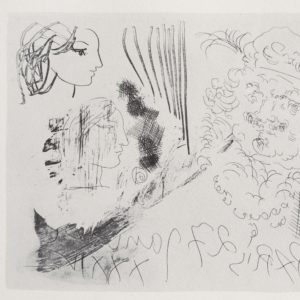
Picasso, Vollard Suite, 1956. Paris, January 27, 1934.
£175 eachPicasso, Vollard Suite, 1956. Paris, January 27, 1934.
Lithographs, published 1956 based on Picasso's work, produced from 1930-1937 for the art dealer Ambroise Vollard. Framed in plain oak with cream mounts. Paris, January 27, 1934. Head of Rembrandt and Heads of Three Girls£175 each -
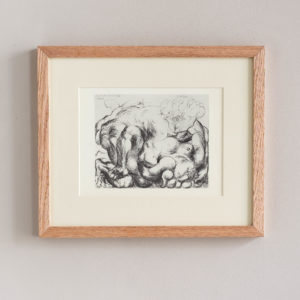
Picasso, Vollard Suite, 1956. Boisgeloup, April 23, 1933.
£175 eachPicasso, Vollard Suite, 1956. Boisgeloup, April 23, 1933.
Lithographs, published 1956 based on Picasso's work, produced from 1930-1937 for the art dealer Ambroise Vollard. Framed in plain oak with cream mounts. Boisgeloup, April 23, 1933. Embrace£175 each -
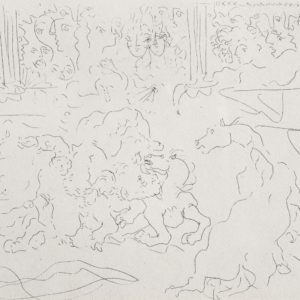
Picasso, Vollard Suite, 1956. Paris, November 7, 1933.
£175 eachPicasso, Vollard Suite, 1956. Paris, November 7, 1933.
Lithographs, published 1956 based on Picasso's work, produced from 1930-1937 for the art dealer Ambroise Vollard. Framed in plain oak with cream mounts. Paris, November 7, 1933. Bullfight I£175 each -
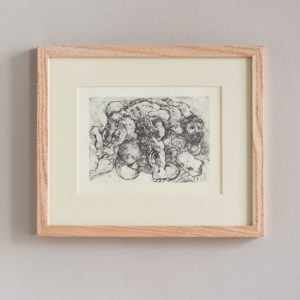
Picasso, Vollard Suite, 1956. Paris, November 2, 1933.
£175 eachPicasso, Vollard Suite, 1956. Paris, November 2, 1933.
Lithographs, published 1956 based on Picasso's work, produced from 1930-1937 for the art dealer Ambroise Vollard. Framed in plain oak with cream mounts. Paris, November 2, 1933. Embrace£175 each -
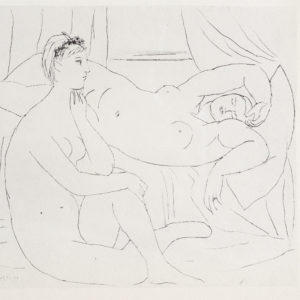
Picasso, Vollard Suite, 1956.
£175 eachPicasso, Vollard Suite, 1956.
Lithographs, published 1956 based on Picasso's work, produced from 1930-1937 for the art dealer Ambroise Vollard. Framed in plain oak with cream mounts. 1931. Two Nudes Resting.£175 each -
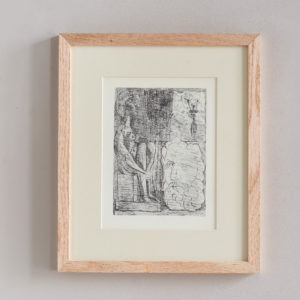
Picasso, Vollard Suite, 1956. Paris, May 5, 1933.
£175 eachPicasso, Vollard Suite, 1956. Paris, May 5, 1933.
Lithographs, published 1956 based on Picasso's work, produced from 1930-1937 for the art dealer Ambroise Vollard. Framed in plain oak with cream mounts. Paris, May 5, 1933. Sculpture of Seated Nude, Sculptured Head, and Vase of Flowers.£175 each -
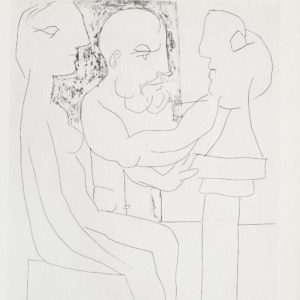
Picasso, Vollard Suite, 1956. Paris, March 25, 1933,
£175 eachPicasso, Vollard Suite, 1956. Paris, March 25, 1933,
Lithographs, published 1956 based on Picasso's work, produced from 1930-1937 for the art dealer Ambroise Vollard. Framed in plain oak with cream mounts. Paris, March 25, 1933. Sculptor Working from a Model.£175 each -
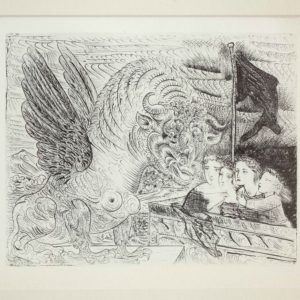
Picasso, Vollard Suite, 1956. c. May 1933.
£175 eachPicasso, Vollard Suite, 1956. c. May 1933.
Lithographs, published 1956 based on Picasso's work, produced from 1930-1937 for the art dealer Ambroise Vollard. Framed in plain oak with cream mounts. c. May 1933. Four Children Viewing a Monster.£175 each -
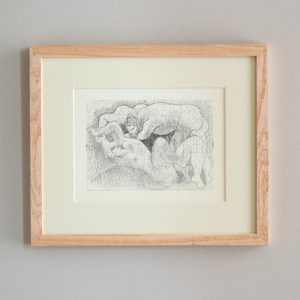
Picasso, Vollard Suite, 1956.
£175 eachPicasso, Vollard Suite, 1956.
Lithographs, published 1956 based on Picasso's work, produced from 1930-1937 for the art dealer Ambroise Vollard. Framed in plain oak with cream mounts. 1931. The Rape£175 each -
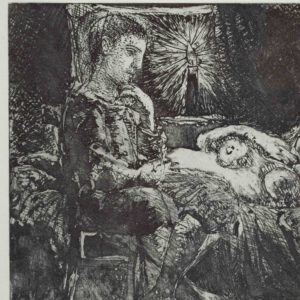
Picasso, Vollard Suite, 1956. c. 1935.
£175 eachPicasso, Vollard Suite, 1956. c. 1935.
Lithographs, published 1956 based on Picasso's work, produced from 1930-1937 for the art dealer Ambroise Vollard. Framed in plain oak with cream mounts. c. 1935. Boy Watching over Sleeping Woman by Candlelight.£175 each -
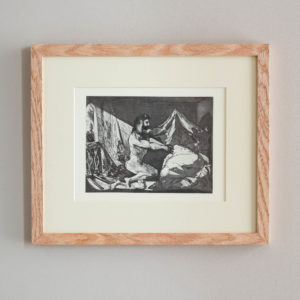
Picasso, Vollard Suite, 1956. June 12, 1936.
£175 eachPicasso, Vollard Suite, 1956. June 12, 1936.
Lithographs, published 1956 based on Picasso's work, produced from 1930-1937 for the art dealer Ambroise Vollard. Framed in plain oak with cream mounts. June 12, 1936. Satyr and Sleeping Woman.£175 each -
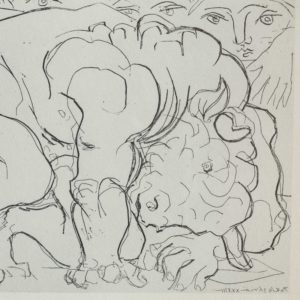
Picasso, Vollard Suite, 1956. Paris, May 26, 1933.
£175 eachPicasso, Vollard Suite, 1956. Paris, May 26, 1933.
Lithographs, published 1956 based on Picasso's work, produced from 1930-1937 for the art dealer Ambroise Vollard. Framed in plain oak with cream mounts. Paris, May 26, 1933. Dying Minotaur.£175 each -
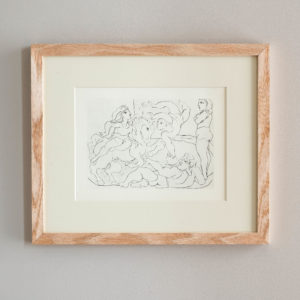
Picasso, Vollard Suite, 1956. Paris, November 11, 1933.
£175 eachPicasso, Vollard Suite, 1956. Paris, November 11, 1933.
Lithographs, published 1956 based on Picasso's work, produced from 1930-1937 for the art dealer Ambroise Vollard. Framed in plain oak with cream mounts. Paris, November 11, 1933. Acrobats with a Horse.£175 each -
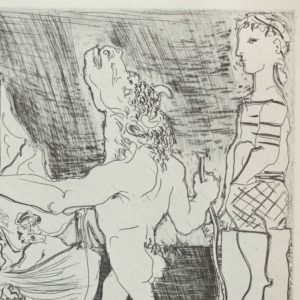
Picasso, Vollard Suite, 1956. Paris, October 23, 1934.
£175 eachPicasso, Vollard Suite, 1956. Paris, October 23, 1934.
Lithographs, published 1956 based on Picasso's work, produced from 1930-1937 for the art dealer Ambroise Vollard. Framed in plain oak with cream mounts. Paris, October 23, 1934. Blind Minotaur Led through the Night by Girl with Dove.£175 each -

Picasso, Vollard Suite, 1956. c. 1935.
£175 eachPicasso, Vollard Suite, 1956. c. 1935.
Lithographs, published 1956 based on Picasso's work, produced from 1930-1937 for the art dealer Ambroise Vollard. Framed in plain oak with cream mounts. c, 1935. Blind Minotaur Led through the Night by Girl with Fluttering Dove.£175 each -
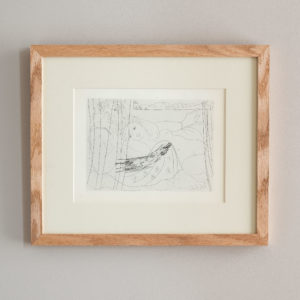
Picasso, Vollard Suite, 1956. Paris, June 16, 1933
£175 eachPicasso, Vollard Suite, 1956. Paris, June 16, 1933
Lithographs, published 1956 based on Picasso's work, produced from 1930-1937 for the art dealer Ambroise Vollard. Framed in plain oak with cream mounts. Paris, June 16, 1933. Minotaur with Girl in His Arms£175 each -
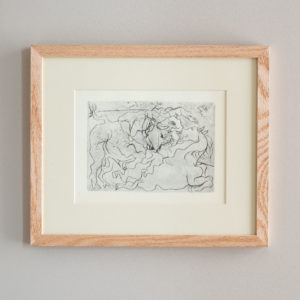
Picasso, Vollard Suite, 1956. Paris, November 8, 1933.
£175 eachPicasso, Vollard Suite, 1956. Paris, November 8, 1933.
Lithographs, published 1956 based on Picasso's work, produced from 1930-1937 for the art dealer Ambroise Vollard. Framed in plain oak with cream mounts. Paris, November 8, 1933. Bullfight II£175 each -
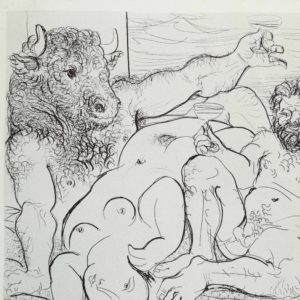
Picasso, Vollard Suite, 1956. Paris, May 18, 1933.
£175 eachPicasso, Vollard Suite, 1956. Paris, May 18, 1933.
Lithographs, published 1956 based on Picasso's work, produced from 1930-1937 for the art dealer Ambroise Vollard. Framed in plain oak with cream mounts. Paris, May 18, 1933. Drinking Minotaur and Sculptor with Two Models£175 each -
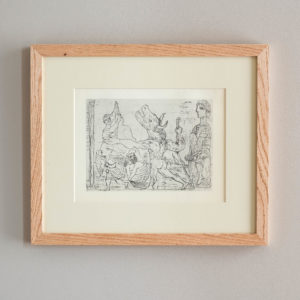
Picasso, Vollard Suite, 1956. c. October 1934.
£175 eachPicasso, Vollard Suite, 1956. c. October 1934.
Lithographs, published 1956 based on Picasso's work, produced from 1930-1937 for the art dealer Ambroise Vollard. Framed in plain oak with cream mounts. c. October 1934. Blind Minotaur Led by Girl with Fluttering Dove.£175 each -
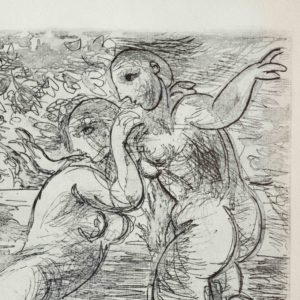
Picasso, Vollard Suite, 1956. Paris, May 22, 1933.
£175 eachPicasso, Vollard Suite, 1956. Paris, May 22, 1933.
Lithographs, published 1956 based on Picasso's work, produced from 1930-1937 for the art dealer Ambroise Vollard. Framed in plain oak with cream mounts. Paris, May 22, 1933. Two Nudes Bathing. At left, Sculptured Head and Head of Spectator.£175 each -
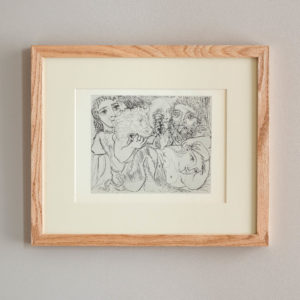
Picasso, Vollard Suite, 1956. Boisgeloup, June 18, 1933.
£175 eachPicasso, Vollard Suite, 1956. Boisgeloup, June 18, 1933.
Lithographs, published 1956 based on Picasso's work, produced from 1930-1937 for the art dealer Ambroise Vollard. Framed in plain oak with cream mounts. Boisgeloup, June 18, 1933. Minotaur, Drinking Sculptor, and Three Models.£175 each -
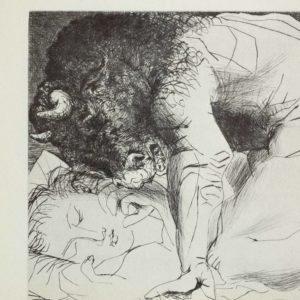
Picasso, Vollard Suite, 1956. Boisgeloup, June 18, 1933.
£175 eachPicasso, Vollard Suite, 1956. Boisgeloup, June 18, 1933.
Lithographs, published 1956 based on Picasso's work, produced from 1930-1937 for the art dealer Ambroise Vollard. Framed in plain oak with cream mounts. Boisgeloup, June 18, 1933. Minotaur over Sleeping Girl.£175 each -
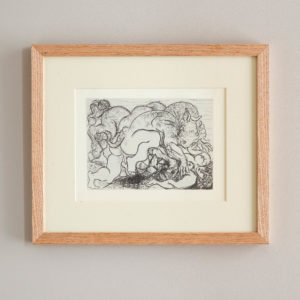
Picasso, Vollard Suite, 1956. Paris, May 23, 1933.
£175 eachPicasso, Vollard Suite, 1956. Paris, May 23, 1933.
Lithographs, published 1956 based on Picasso's work, produced from 1930-1937 for the art dealer Ambroise Vollard. Framed in plain oak with cream mounts. Paris, May 23, 1933. Minotaur Assaulting a Girl.£175 each -
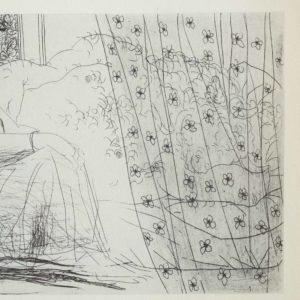
Picasso, Vollard Suite, 1956. Paris, May 18, 1933.
£175 eachPicasso, Vollard Suite, 1956. Paris, May 18, 1933.
Lithographs, published 1956 based on Picasso's work, produced from 1930-1937 for the art dealer Ambroise Vollard. Framed in plain oak with cream mounts. Paris, May 18, 1933. Girl Seated by Sleeping Minotaur.£175 each -
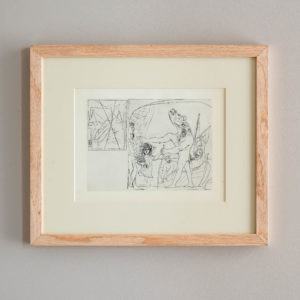
Picasso, Vollard Suite, 1956. Boisgeloup. September 22, 1934.
£175 eachPicasso, Vollard Suite, 1956. Boisgeloup. September 22, 1934.
Lithographs, published 1956 based on Picasso's work, produced from 1930-1937 for the art dealer Ambroise Vollard. Framed in plain oak with cream mounts. Boisegeloup. September 22, 1934. Blind Minotaur Led by Girl with Bouquet of Wild Flowers.£175 each -
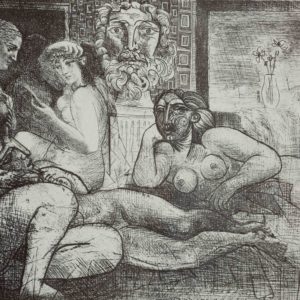
Picasso, Vollard Suite, 1956. Paris, March 10, 1934
£175 eachPicasso, Vollard Suite, 1956. Paris, March 10, 1934
Lithographs, published 1956 based on Picasso's work, produced from 1930-1937 for the art dealer Ambroise Vollard. Framed in plain oak with cream mounts. Paris, March 10, 1934. Four Models and a Sculptured Head.£175 each -

Picasso, Vollard Suite, 1956. Paris, March 2, 1934
£175 eachPicasso, Vollard Suite, 1956. Paris, March 2, 1934
Lithographs, published 1956 based on Picasso's work, produced from 1930-1937 for the art dealer Ambroise Vollard. Framed in plain oak with cream mounts. Paris, March 2, 1934. Sculptor and Statue of Three Female Dancers£175 each -
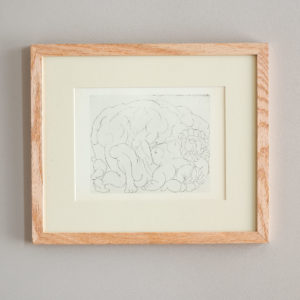
Picasso, Vollard Suite, 1956. Boisgeloup, April 22, 1933.
£175 eachPicasso, Vollard Suite, 1956. Boisgeloup, April 22, 1933.
Lithographs, published 1956 based on Picasso's work, produced from 1930-1937 for the art dealer Ambroise Vollard. Framed in plain oak with cream mounts. Boisegeloup, April 22, 1933. Embrace.£175 each -
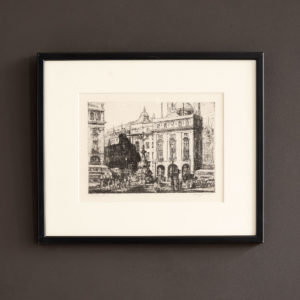
Piccadilly Circus
£140Piccadilly Circus
A black line etching of Piccadilly Circus by the artist engraver Henry Lambert showing the Shaftesbury Memorial and the Alliance Life office on the corner of Regent Street.£140
Featured Items
-
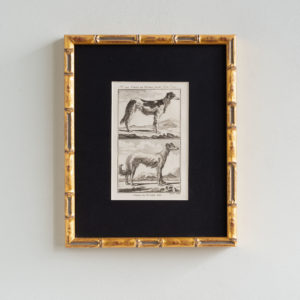
18th Century French Engravings of Dogs
£175 each18th Century French Engravings of Dogs
Published for, Histoire naturelle, générale et particulière (1749–1804), which was the first modern attempt to systematically present all existing knowledge in the fields of natural history, geology, and anthropology.£175 each -
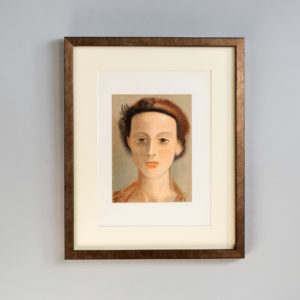
Portrait by Andre Derain, Verve Vol 2 / No. 5-6.
£800Portrait by Andre Derain, Verve Vol 2 / No. 5-6.
The Verve Review was a purposefully luxurious. It ran from 1937 to 1960, but with only 38 editions available, due to the high degree of design and editorial work dedicated to each issue. Each edition contained unique lithographic prints, commissioned by the editor, and each cover a double-page lithograph elaborated by one of the artists contained within. It was the brainchild of its editor Stratis Eleftheriades, a Greek National who moved to Paris in the early thirties to take part in the growing Modernist movement, writing under the name of Teriade.£800 -
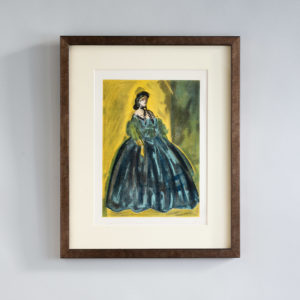
Portraits Part II by Constantin Guys, Verve Vol 2 / No. 5-6.
£500Portraits Part II by Constantin Guys, Verve Vol 2 / No. 5-6.
The Verve Review was a purposefully luxurious. It ran from 1937 to 1960, but with only 38 editions available, due to the high degree of design and editorial work dedicated to each issue. Each edition contained unique lithographic prints, commissioned by the editor, and each cover a double-page lithograph elaborated by one of the artists contained within. It was the brainchild of its editor Stratis Eleftheriades, a Greek National who moved to Paris in the early thirties to take part in the growing Modernist movement, writing under the name of Teriade.£500 -
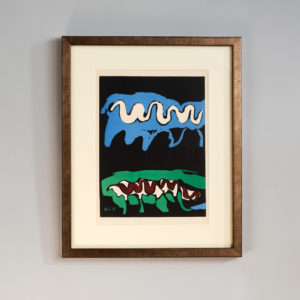
The Four Elements, Earth by Francisco Bores, Verve Vol. 1 / No. 1.
£600The Four Elements, Earth by Francisco Bores, Verve Vol. 1 / No. 1.
The Verve Review was a purposefully luxurious. It ran from 1937 to 1960, but with only 38 editions available, due to the high degree of design and editorial work dedicated to each issue. Each edition contained unique lithographic prints, commissioned by the editor, and each cover a double-page lithograph elaborated by one of the artists contained within. It was the brainchild of its editor Stratis Eleftheriades, a Greek National who moved to Paris in the early thirties to take part in the growing Modernist movement, writing under the name of Teriade.£600
